Best Decking Material Options
Not sure what type of decking material you want for your deck? Check out all your options, from composite to natural wood with Trex’s guide.
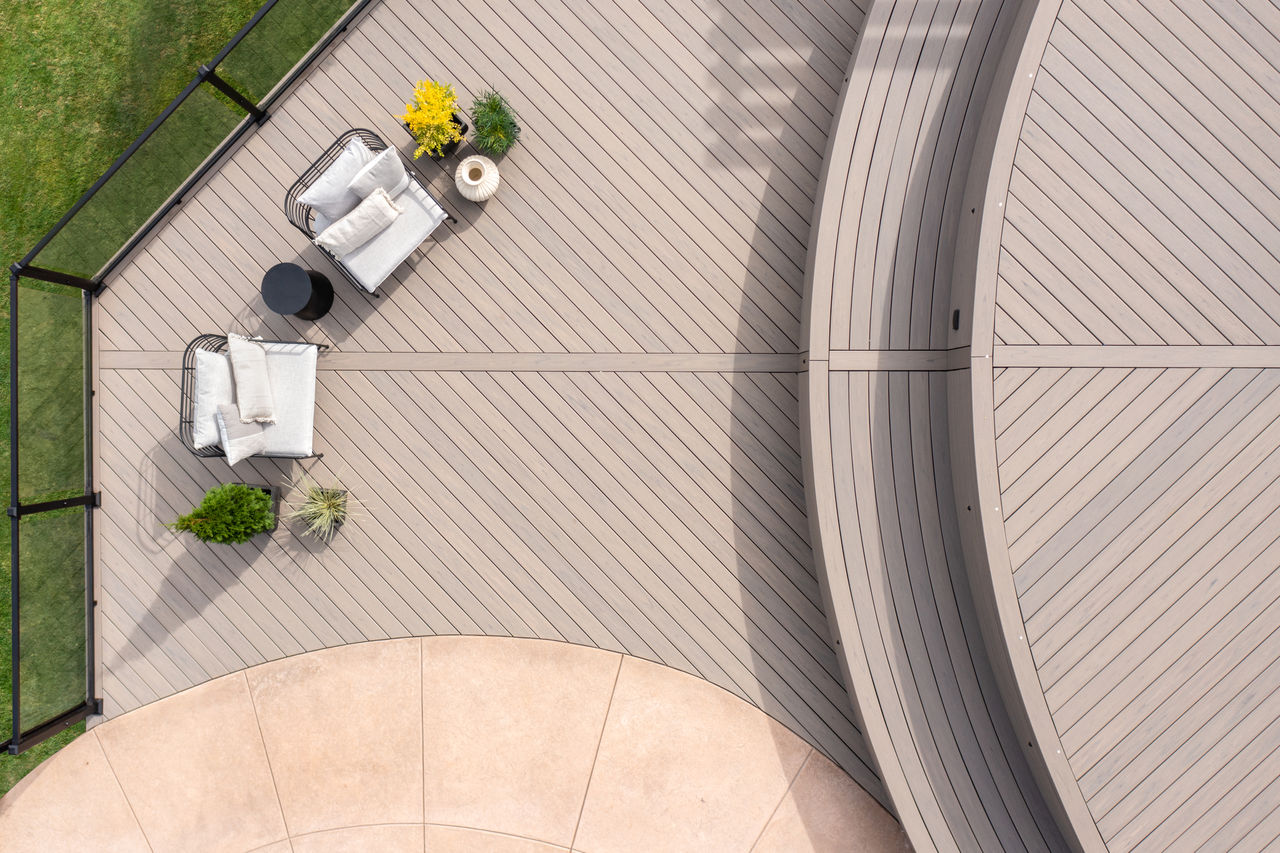
Building a deck is a great way to add beauty and value to your home. To create a space that will remain comfortable, safe, and inviting for years to come, the first step is to choose the best decking material for the job.
There are many decking material options to choose from, and each one has different benefits and drawbacks. As you weigh your options, pay close attention to what it will cost—both in time and money— to maintain your deck, as yearly tasks will add up over the life of the deck. You’ll also want to consider the initial price as well as the look of the material to build a deck that’s just right for your property.
So what is the best decking material? The answer depends on your personal needs and preferences. Here’s how to understand your options and make the best choice for your home.
What Is the Longest Lasting Deck Material?
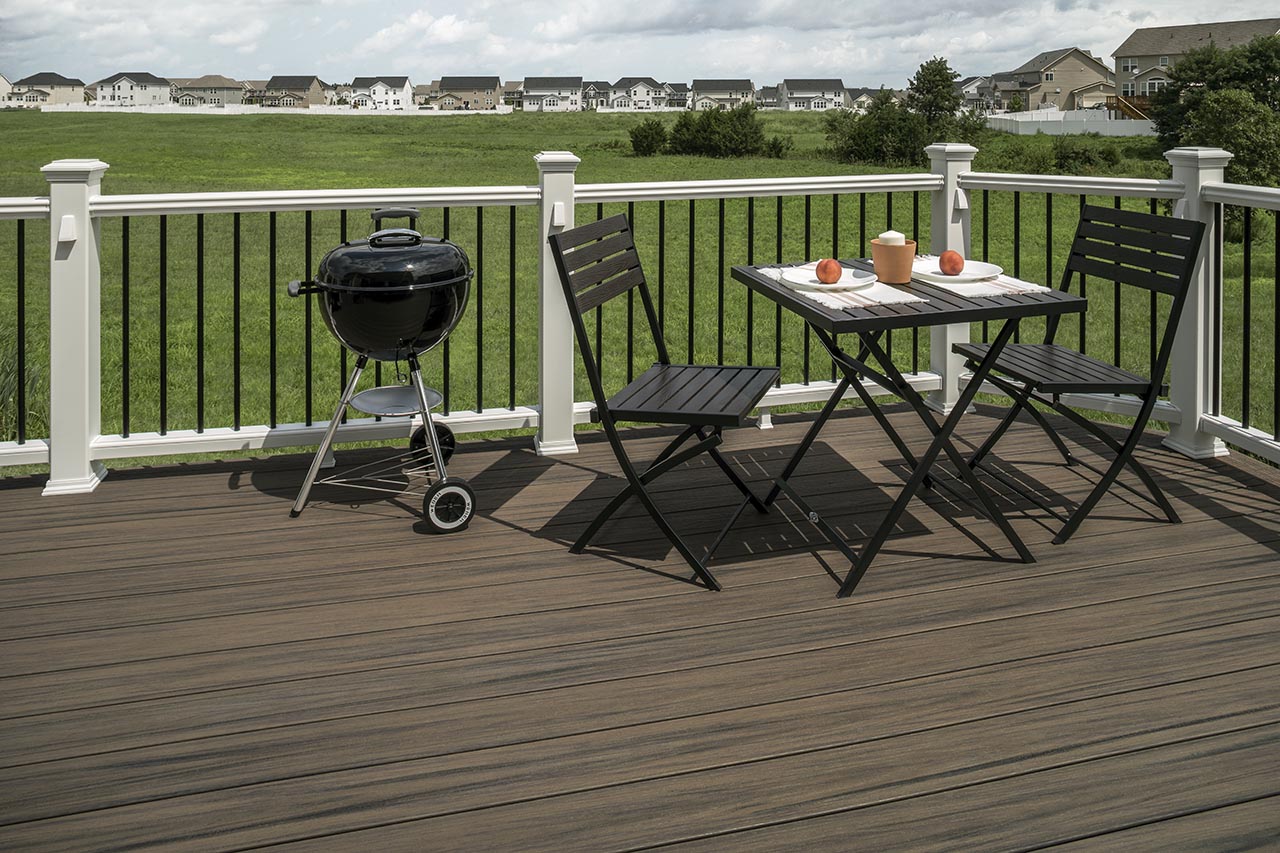
One of the main considerations when choosing decking material is its longevity. The more durable the deck, the more cost-effective your investment is over time. Traditional wood decks last about 15 years with proper maintenance. Popular wood options include cedar, redwood, and pressure-treated pine.
Composite decking is manufactured from a mix of wood and plastic film to create a stable and durable decking material. Because it doesn’t absorb water, it resists twisting and warping. It also resists mold and rot in wet conditions, and it doesn’t fade in the sun.
Trex composite decking is one of the longest-lasting deck materials and can last 25 to 50 years with minimum care. Unlike decks from even the most durable wood, such as teak, mahogany, and Ipe, Trex composite decking won’t rot, warp, or splinter. It also never needs seasonal painting, sealing, or staining to maintain its color or protect it from the elements. And it will never be food for termites or other insects. Trex composite decking is backed by 25-, 35- and 50-year limited residential warranties (depending upon the product line), so its lifespan isn’t just a guess—it’s a promise.
What Is the Most Cost-Effective Decking Material?
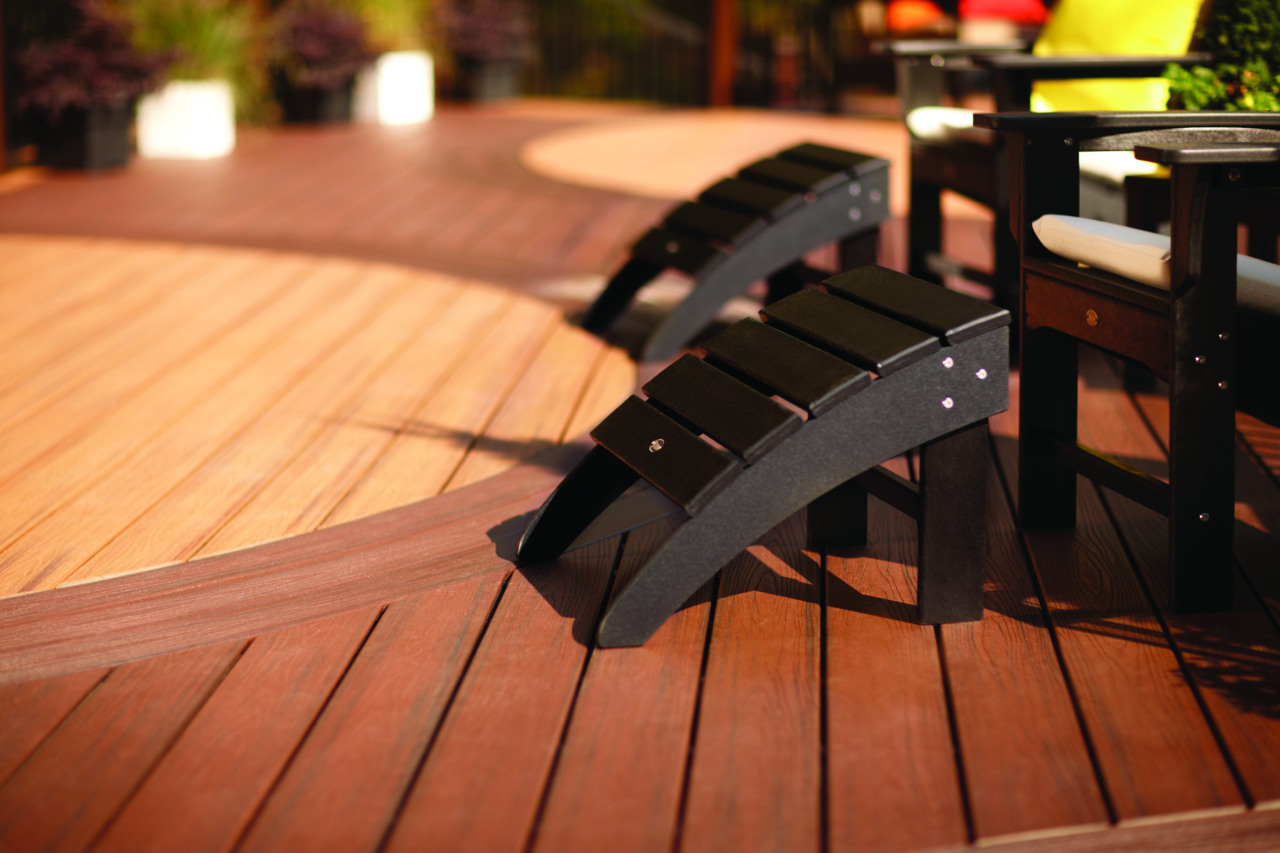
To build a truly cost-effective deck, you need to weigh several factors: price, longevity, and maintenance. Though you’ll only pay for the initial outlay for your decking material once, you’ll pay for yearly maintenance—cleaning, repairs, and refinishing—over the life of the deck. When you add up the true costs, the least expensive material isn’t often the most cost-effective in the long run.
For example, pressure-treated pine is generally the least expensive decking material, costing between $2.50-$4.50 per square foot. However, wood decks should be cleaned each spring to remove mold and mildew, and need resealing or restaining to maintain their good looks. As boards warp or splinter, you’ll also need to keep up with maintenance as a matter of safety. Annual maintenance for a wood deck can run between $100 and $400 per year.
Though composite decking costs more upfront, it is the most cost-effective decking material over its lifetime due to low maintenance costs. For example, Trex Enhance® Naturals cost only $10 a year to maintain—the cost of soap and water to give boards a good cleaning. Its 25-year lifespan also lowers the cost per year of owning your deck once it's built.
What Is the Most Durable Type of Decking?
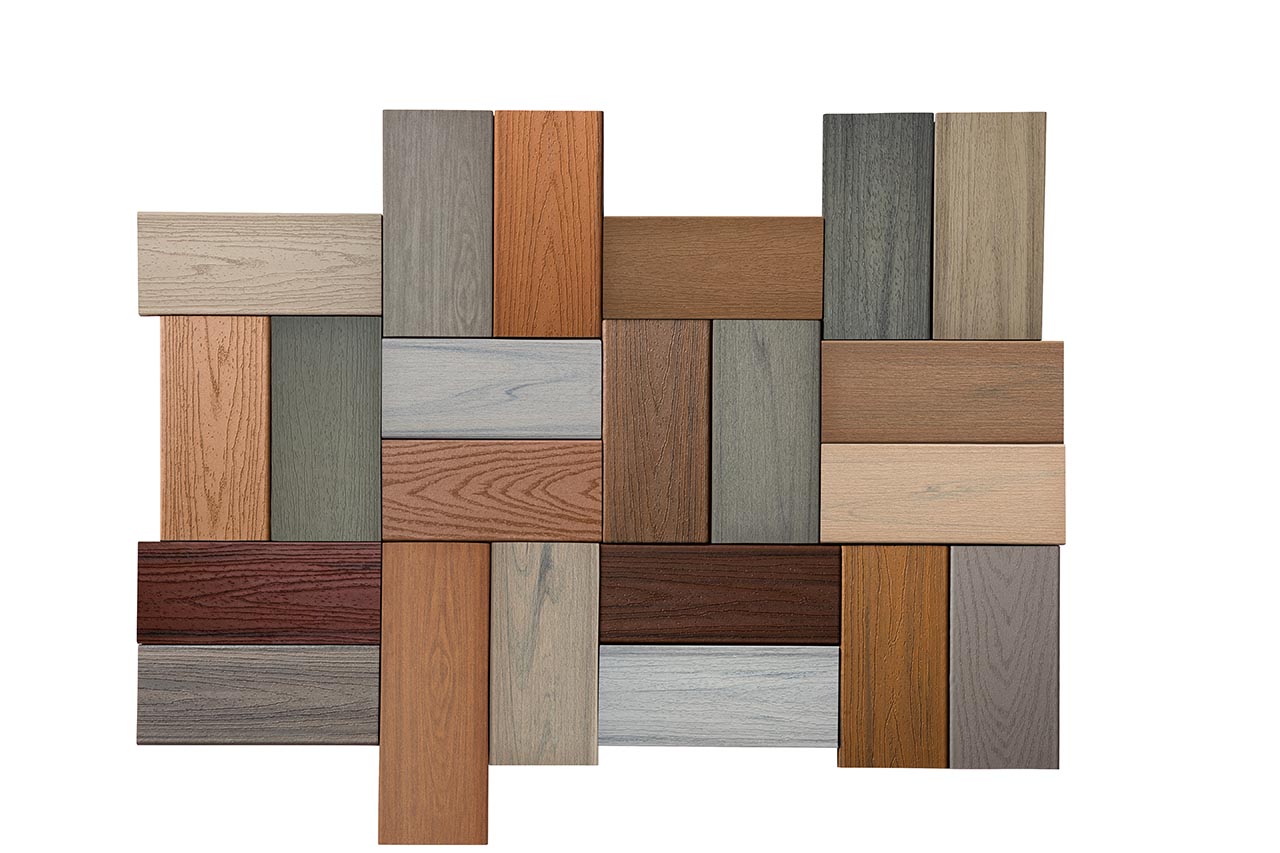
Composite decking is the most durable type of decking. Wood is subject to natural decay from insects and the elements and lasts only 15 years at best. Even alternative decking materials such as powder-coated steel (aluminum) and plastics fade, corrode or stain when exposed to the elements over an extended period. Composite decking, on the other hand, blends reclaimed wood and plastic film into a sturdy material resistant to water and UV damage. The result is an eco-friendly product that lasts longer than traditional wood—and looks better doing it.
Types of Decking Material
To choose the best outdoor decking material, it’s important to consider the durability, maintenance, and cost of each option. Here is a deeper look at some of the most common types of decking material to help you decide which one is right for you.
Composite Decking
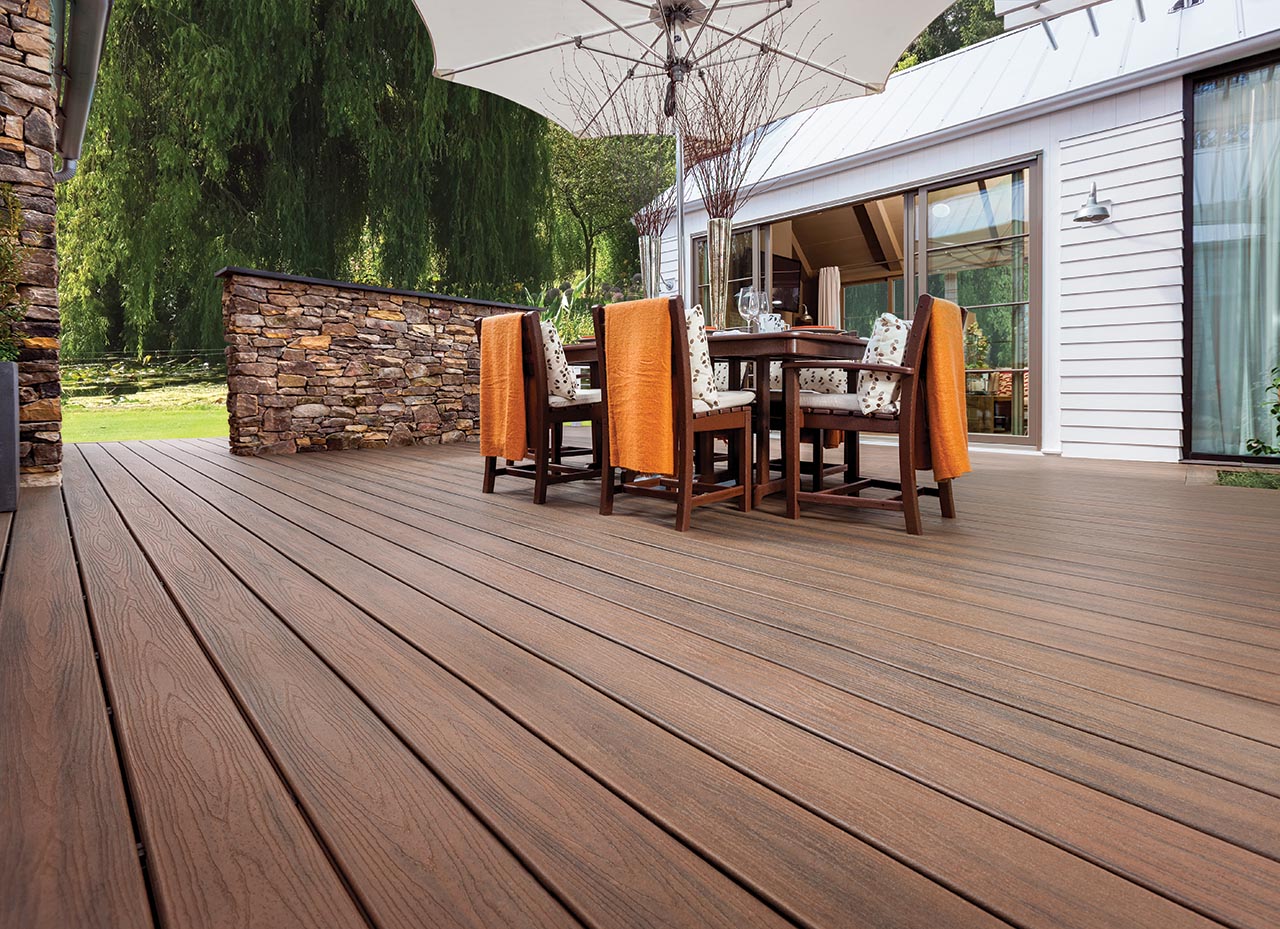
Composite decking is truly a distinctive decking material option and is one of the best materials for decks. Trex composite decking is made from a blend of wood fibers—including reclaimed wood and post-industrial sawdust—and plastic film from items like shopping bags and shrink wrap. Trex products are manufactured from 95% recycled content, making it an eco-friendly choice that also stands up to the elements. Composite is more stable than wood, so your deck boards won’t warp, chip, or splinter over time. This decking material also lasts longer than wood and resists insects, rot, and mold damage.
Composite decking comes in various styles and color shades, including pressing patterns or wood grain finishing to mimic the feel of natural wood underfoot. Though it looks like hardwood it performs much better, requiring only minimal maintenance to keep it clean—no sanding, finishing or restaining needed. Trex composite decking costs an average of $4.60-$13.60 per square foot*—a price that is even more cost-effective when you consider its minimal maintenance costs over the life of the deck.
All things considered, composite decking offers incredible value, as it lasts longer and requires far less maintenance than alternative decking materials. The best way to get a feel for how composite will look on your property is to see it in person. Order a sample of Trex composite decking to get started on your deck project today.
*Average price range excludes Trex Signature® decking, our luxury decking collection. Trex actual material costs and install costs can and will vary based on geographic area, site location, seasonality, design complexity, whether the product is stocked locally, and additional features such as stairs, angles, curves, lighting, etc. For most professionally installed projects, materials constitute up to one third of the total cost.
Pressure Treated Wood
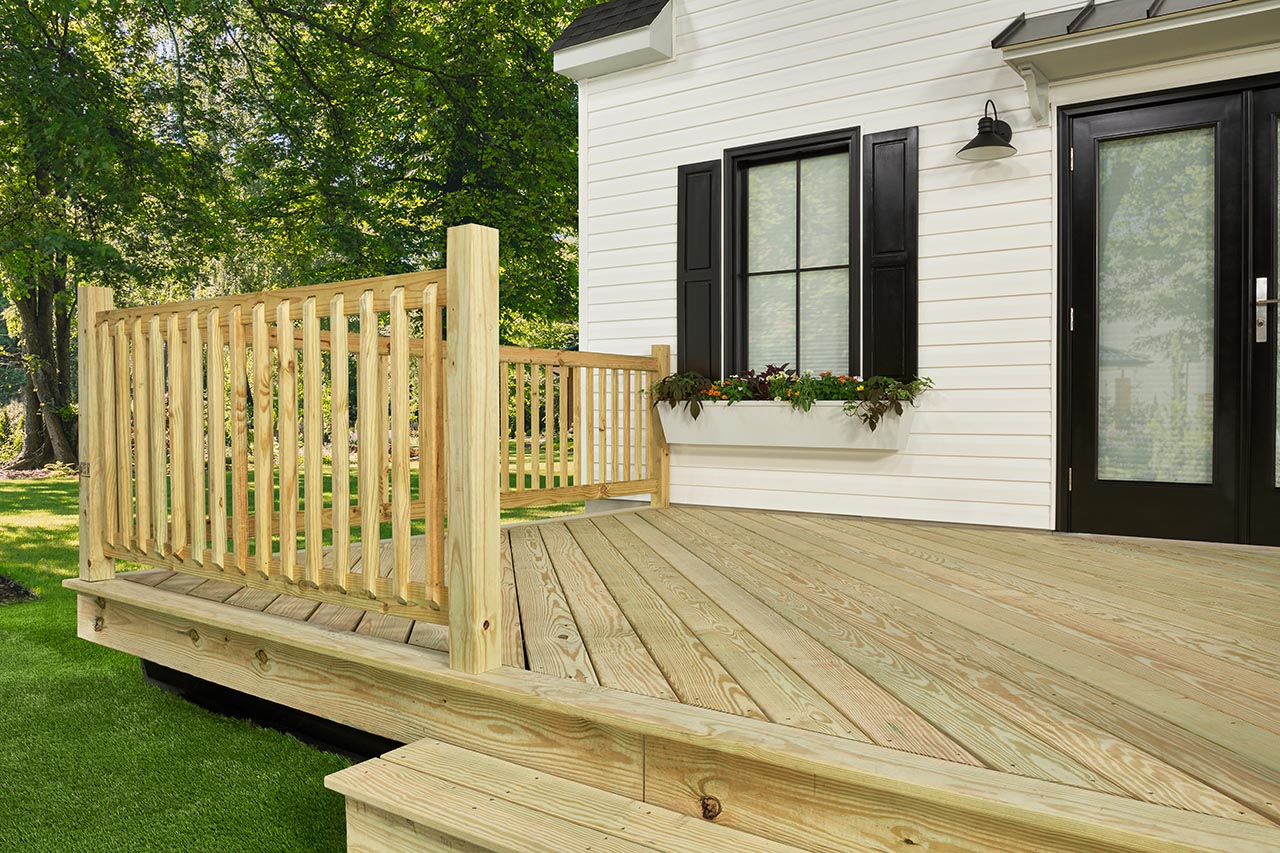
Pressure-treated wood is one of the least expensive outdoor decking material options on the market. It costs $2.50-$4.50 per square foot and is easy to install with standard decking screws and clips. Pressure-treated lumber is made from wood infused with chemical preservatives such as borate mineral salts or copper and ammonium alkyl. As these chemicals are forced into the wood, it expands and becomes heavier, though over time the wood will shrink again. This natural shrinkage leads to some “checks” or cracking, and can cause paint to flake if you choose that finish.
For this reason, many people choose to stain a pressure-treated deck rather than paint it. However, stained boards will need to be sanded and refinished several times over the life of the deck. This job requires power washing to remove mold and mildew, sanding to remove old stains and prepare a fresh surface for the new finish, and regular restaining to lock out moisture and prevent rot or insect damage. Depending on how harsh conditions are in your neighborhood, you may need to make time for an annual ritual of restaining your deck—and budget for the extra cost.
Trex Alternative
Though pressure-treated decking has a lower upfront cost, you can avoid the extra maintenance costs by choosing a composite alternative. Trex Enhance® composite decking comes in seven colors that never fade over time, so you can spend more time enjoying your deck instead of sanding and staining it. Each board features a wood-grain texture for a natural look without all the work. All Enhance products work together, so you can mix and match trim for a custom look.
Premium Wood
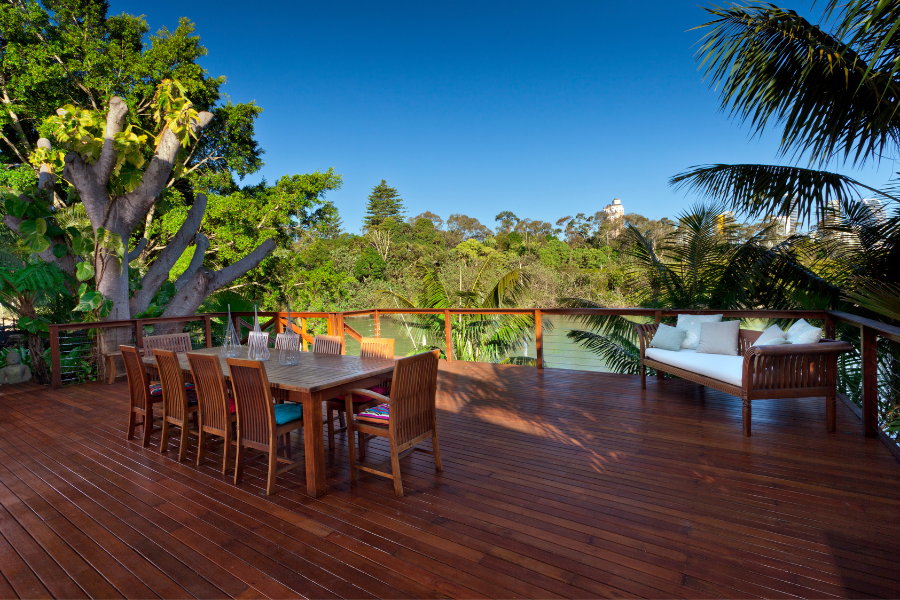
Pressure-treated lumber is typically made of pine, an inexpensive softwood. But pine isn’t the only choice for wood decking. Cedar and redwood are softwoods with natural resistance to rot and insect damage. There are also hardwoods such as Brazilian wood, teak, Ipe, mahogany, and eucalyptus. These premium woods are sought-after for decking due to their beauty and durability. However, no natural wood will last forever without some additional protection from the elements, so even premium hardwoods require the same regular maintenance that pressure-treated lumber does: power washing, sanding, and refinishing with stain or a clear coat for protection. Without stain, even these hardwoods will fade down to a more silvery or grayish tone as they age.
Premium wood decking is also expensive. Depending on the species of wood, it generally costs from $5-$25 per square foot—about twice as much as composite and five times as much as pressure-treated wood. The high price is due in part to import costs. It’s also worth noting that there is an environmental cost to harvesting hardwood from forests, whereas composite decking is sustainably manufactured.
Trex Alternative
Composite decking, such as Trex Select® Composite Decking, is an eco-friendly alternative decking material to costly and unsustainable premium woods. Trex composite decking is made of 95% recycled plastic film and reclaimed wood. These composite decking materials offer high performance, including standing up to weather events and unavoidable weekend mishaps like spilled wine or punch. Trex boards also resist mold and mildew in damp environments.
Plastic, Polymer Capped, and PVC Decking
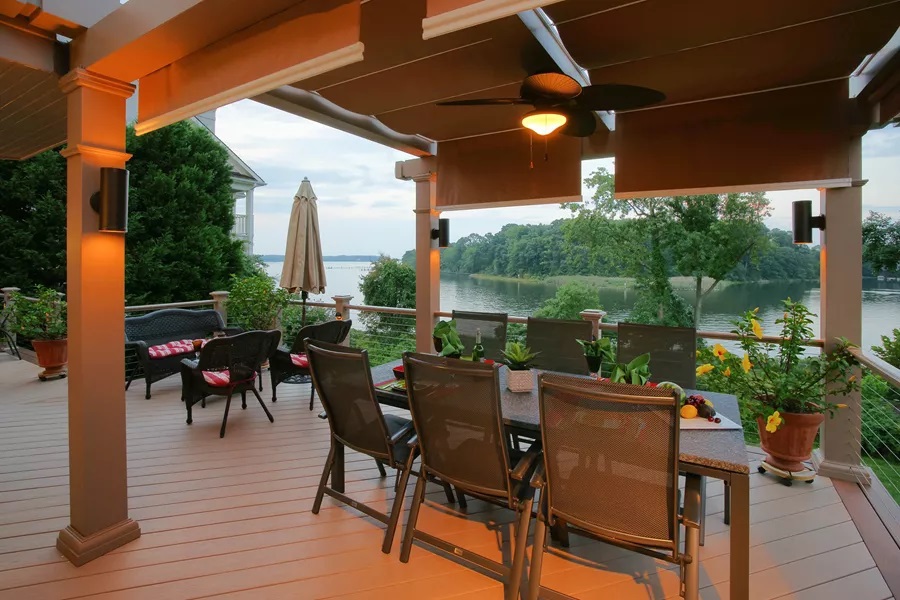
There are several types of plastic decking, including polymer capped and PVC decking. Unlike composite decking, these products are made from 100% plastic—no wood included. Like composite decking, PVC decking and polymer capped PVC decking is highly stable and unlikely to warp or splinter. Some polymer wrapped options have a composite core inside a vinyl shell. Plastic decking is a very low-maintenance choice for decks, as they never need to be painted or stained, merely cleaned regularly. Plastic decking is durable and can last between 25 and 30 years without significant upkeep.
However, plastic decking can be quite expensive, costing from $11.82-$26.23 per square foot. Many plastic decking systems also require special fasteners, which can further drive up the cost of installation — or the time involved in a DIY project as the learning curve can be steep. While upkeep is easy and plastic decks last for decades, they often cannot be recycled at the end of their life span and are not biodegradable, so they often end up taking up space in landfills when decks are rebuilt.
Trex Alternative
Instead of using plastic composites that are expensive and detrimental to the environment, Trex offers alternative decking material that is both sustainable and affordable. Products such as Trex Transcend® Lineage® Composite Decking cost less than most plastic decking materials and can last longer than composite decking and plastic decking options. On-trend color options and subtle grain patterns look and feel more like real wood than plastic or PVC decking, making Trex a great alternative in applications where authenticity is important.
What Is the Best Material to Use for Decks?
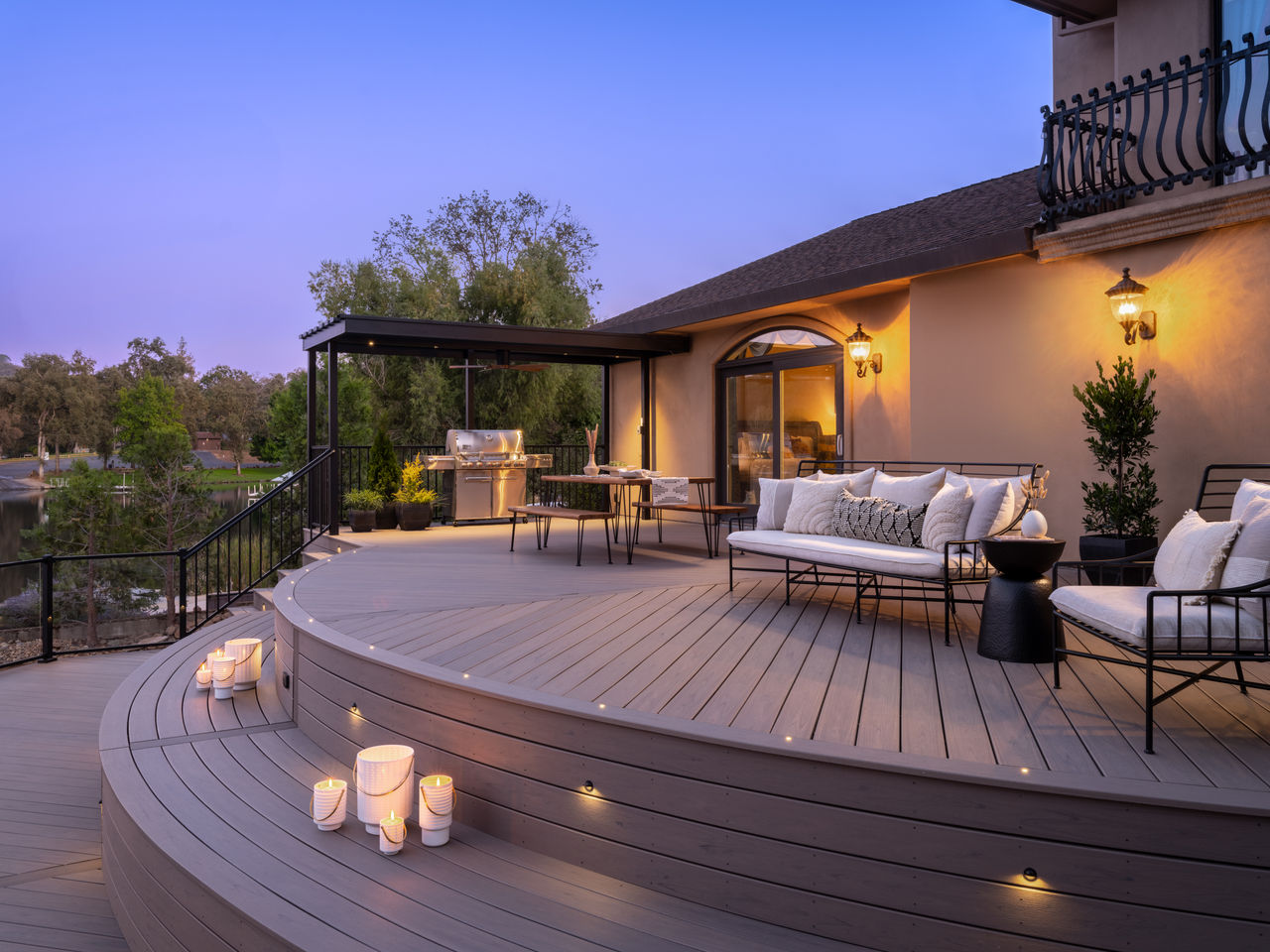
So, what is the best decking material to use in your next outdoor decking project? For most people, the answer will strike a balance of affordability and low maintenance without compromising on aesthetics. Pressure-treated wood is the cheapest option up front, but it will need significant maintenance in the form of power washing, sanding, and restaining to keep it looking good and to protect it from the elements. Premium woods cost more and still need the same upkeep over time. Plastics, on the other hand, need little maintenance but are often the most expensive option—and one that often doesn’t look or feel much like wood, either.
Composite decking made of sustainable reclaimed wood and recycled plastic film hits the sweet spot. Though it costs more than pressure-treated pine initially, it requires only an inexpensive annual cleaning to maintain its good looks over its lifespan. Composite boards don't fade, warp, or run the risk of damage from insects like termites and carpenter ants. Trex composite decking comes in a variety of colors, wood grains, and price points, so you can get everything you need in a deck without sacrificing your time or busting your budget.
Shop the Trex® Decking Collection at a retailer near you.
This content was partially or fully generated by AI and has been reviewed by our team to ensure accuracy and relevance.





































